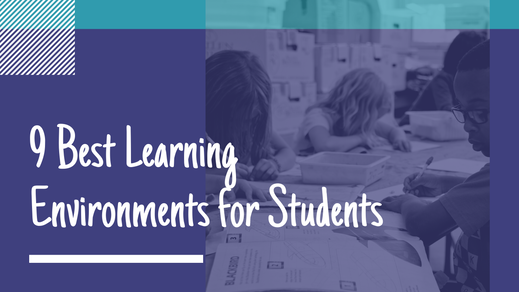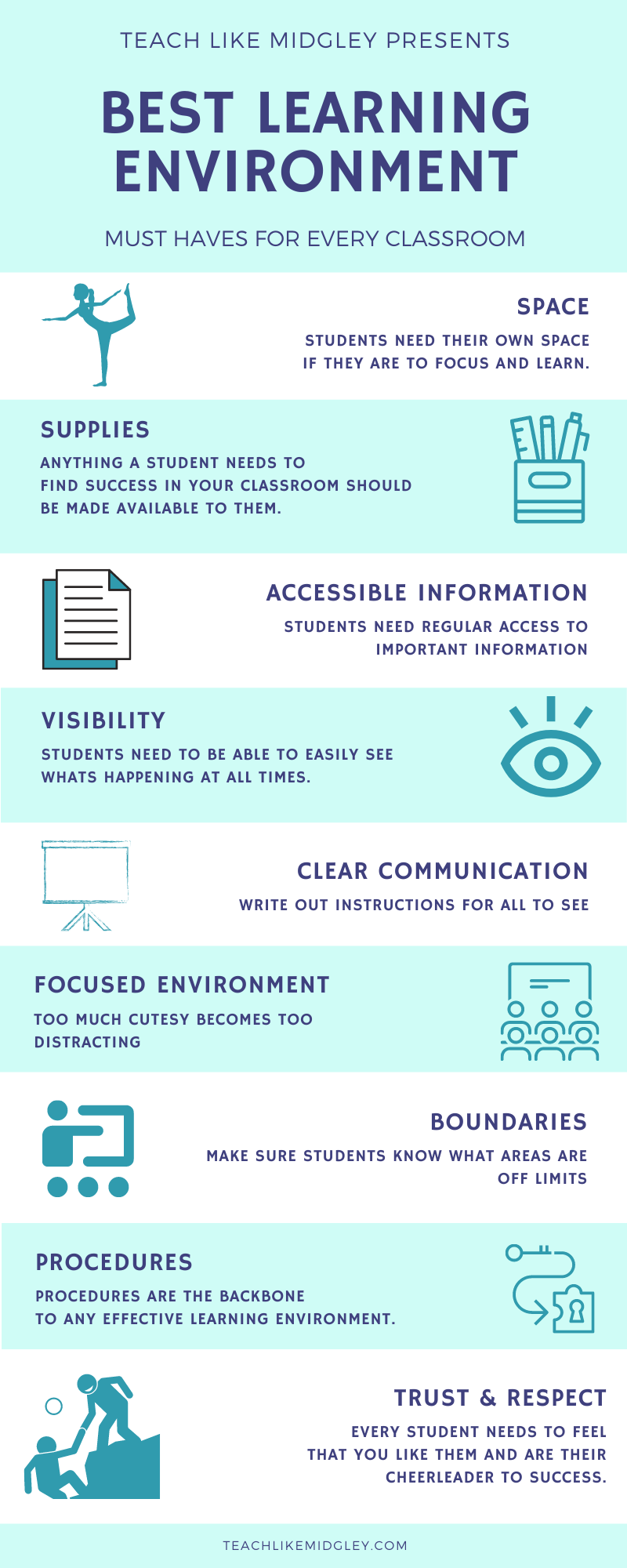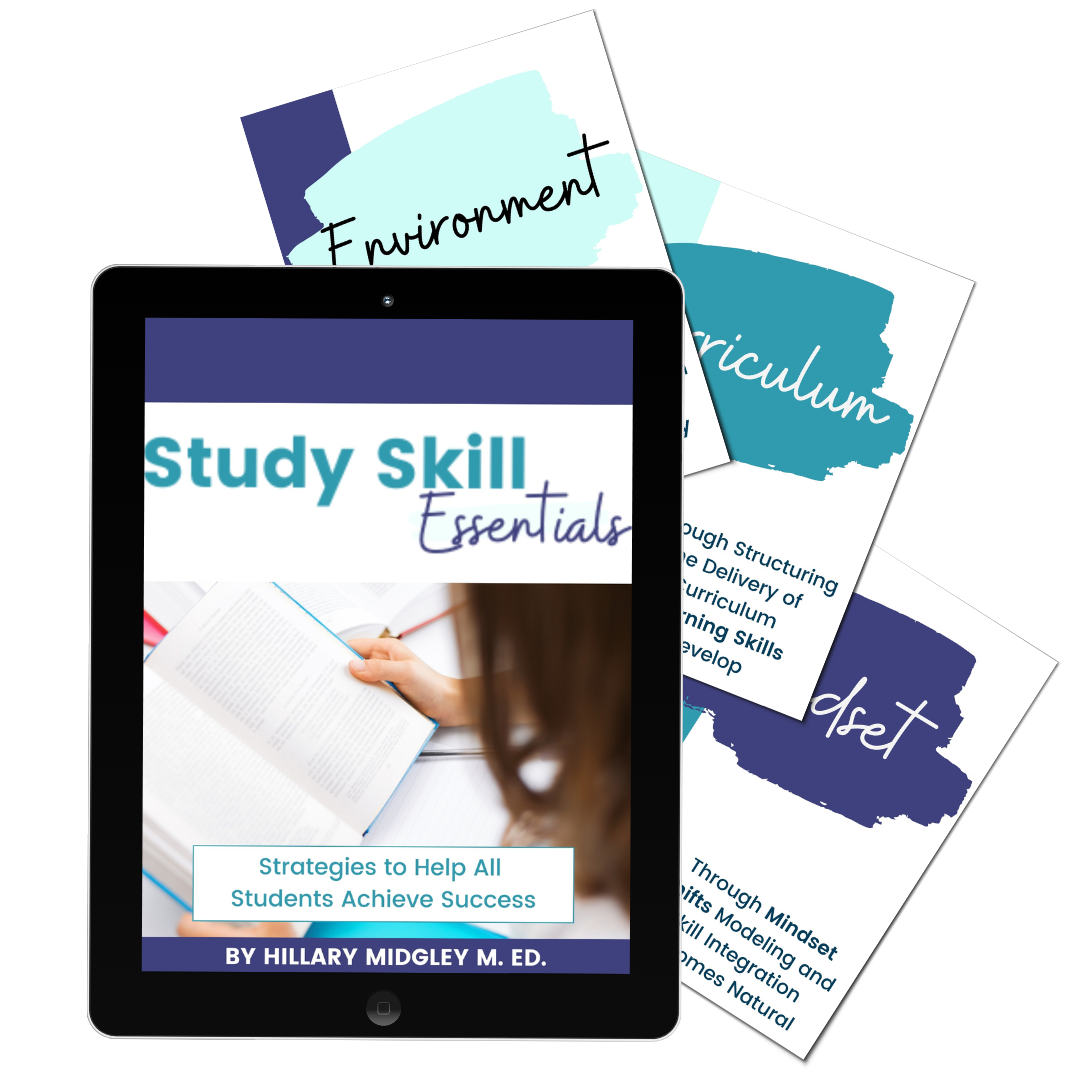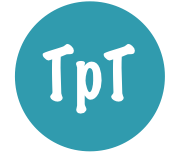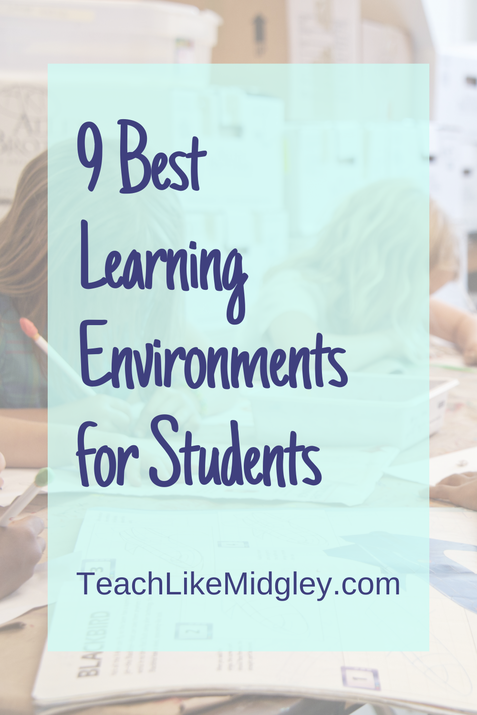9 Best Learning Environment Components for Students
One of the most exciting parts of becoming a teacher is getting to design your classroom and create a learning environment for students.
When I first started my career I had so much fun researching classroom décor and room layouts. Even if it was back in the day when we were mostly limited to catalogs. Now a days new teachers have access to so many digital resources and pictures of classrooms are abundant online.
When I first started my career I had so much fun researching classroom décor and room layouts. Even if it was back in the day when we were mostly limited to catalogs. Now a days new teachers have access to so many digital resources and pictures of classrooms are abundant online.
It’s easy to get caught up in the excitement and design your learning environment around you, the teacher.
Although part of your classroom should be designed around your needs, there is another factor that should take precedence: your students’ needs.
So before you purchase that entire pineapple classroom décor set and get carried away with the fun of it all, I want to share with you 9 of the best learning environment components for students (and teachers too).
#1 Space
Students need their own space if they are to focus and learn. Squeezing students into an area where they are uncomfortable will hinder their ability to learn.
#2 Supplies
Anything a student needs to find success in your classroom should be made available to them in one way or another.
If a student doesn’t have a pencil, you need a procedure for them to get one. If a student forgets their notebook, you need a procedure for how it should be handled.
You also need procedures for how students acquire materials like books and papers so class time is not wasted.
#3 Accessible Information
Students need regular access to important information like homework assignments, test dates, rules, consequences, class procedures. An information board that is posted high on the wall above a shelving unit is not easily accessible to your students. Be sure they can understand and easily see what it says.
#4 Visibility
Take care when arranging student seats. Just because a desk fits, doesn’t mean it’s going to yield good visibility to the student who sits there.
#5 Clear Communication
A good rule of thumb is to provide written directions, especially when they involve more than 2 steps. You can provide students with their own copy, but another effective strategy is to write clear, concise instructions on a board for everyone to see and reference.
#6 Focused Environment
Too much of the fun, cutesy themes can be overwhelming for students. Be sure your classroom theme is age appropriate and use your curriculum for inspiration when designing your secondary classroom.
#7 Boundaries
There are different areas to any classroom. Most importantly, student areas and teacher areas. Make sure your students know and understand boundaries. Not only do students need space, but teachers need space too.
#8 Procedures
Procedures are the backbone to any effective learning environment. Anything you ask a student to do, you need a procedure for that. Turn in papers – need a procedure. Pass out supplies – need a procedure. Participate in whole group conversation – need a procedure. Enter your classroom – need a procedure. It may feel cumbersome when you first design these procedures but they will be worth it. And the most important aspect of all, you need to TEACH these procedures to your students.
#9 Trust and Respect
Every student needs to feel that you like them and are their cheerleader to success. Greet students by name and acknowledge their unique strengths and personalities.
Students need their own space if they are to focus and learn. Squeezing students into an area where they are uncomfortable will hinder their ability to learn.
#2 Supplies
Anything a student needs to find success in your classroom should be made available to them in one way or another.
If a student doesn’t have a pencil, you need a procedure for them to get one. If a student forgets their notebook, you need a procedure for how it should be handled.
You also need procedures for how students acquire materials like books and papers so class time is not wasted.
#3 Accessible Information
Students need regular access to important information like homework assignments, test dates, rules, consequences, class procedures. An information board that is posted high on the wall above a shelving unit is not easily accessible to your students. Be sure they can understand and easily see what it says.
#4 Visibility
Take care when arranging student seats. Just because a desk fits, doesn’t mean it’s going to yield good visibility to the student who sits there.
#5 Clear Communication
A good rule of thumb is to provide written directions, especially when they involve more than 2 steps. You can provide students with their own copy, but another effective strategy is to write clear, concise instructions on a board for everyone to see and reference.
#6 Focused Environment
Too much of the fun, cutesy themes can be overwhelming for students. Be sure your classroom theme is age appropriate and use your curriculum for inspiration when designing your secondary classroom.
#7 Boundaries
There are different areas to any classroom. Most importantly, student areas and teacher areas. Make sure your students know and understand boundaries. Not only do students need space, but teachers need space too.
#8 Procedures
Procedures are the backbone to any effective learning environment. Anything you ask a student to do, you need a procedure for that. Turn in papers – need a procedure. Pass out supplies – need a procedure. Participate in whole group conversation – need a procedure. Enter your classroom – need a procedure. It may feel cumbersome when you first design these procedures but they will be worth it. And the most important aspect of all, you need to TEACH these procedures to your students.
#9 Trust and Respect
Every student needs to feel that you like them and are their cheerleader to success. Greet students by name and acknowledge their unique strengths and personalities.
Final Thoughts...
So before you jump into that cute classroom theme you saw on Pinterest, take a moment to consider what your students need in their classroom to find success.
If you are interested in learning more about how you can incorporate techniques into your daily instruction to help your students develop their study skills, then be sure to check out Study Skill Integration for Teachers Professional Development Training.
If you are interested in learning more about how you can incorporate techniques into your daily instruction to help your students develop their study skills, then be sure to check out Study Skill Integration for Teachers Professional Development Training.
"My students have been struggling with study skills and I purchased this product to help improve my knowledge about how to teach my students study skills. This was a great purchase. It helped me to see small changes that I could add to my teaching routines and lessons to help my students with study skills in my class and prepare them for future grades/classes." - Amy B.
⭐⭐⭐⭐⭐ Extremely Satisfied |
You May Also Like...
+ 6 Effective Goal Setting Strategies for Middle Schoolers
+ 9 Strategies to Help Students Take Better Class Notes
+ 7 Dynamite Test Taking Strategies for Middle Schoolers
+ 7 Effective Ways to Teach Vocabulary in Middle School
+ 9 Strategies to Help Students Take Better Class Notes
+ 7 Dynamite Test Taking Strategies for Middle Schoolers
+ 7 Effective Ways to Teach Vocabulary in Middle School
This post was originally written by Hillary Midgley and published at Study Skills Unleashed
Let's Connect...
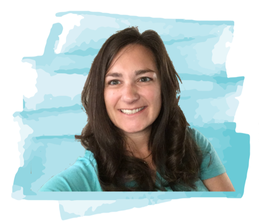
Welcome! I'm Hillary Midgley, a veteran 6th grade teacher.
I create educational materials and develop curriculum for other teachers. I specialize in teaching students how to learn through my Study Skills Curriculum. I have established fundamental classroom systems and structures for teachers to help them streamline their classroom. And my passion is teaching ancient history through engaging activities with foundations in academic skills. Here you will find resources on all of these topics and more. Learn more about me here.
|

